Harveya pumila – Ink Plant, Inkblom
Text and all photographs by Garfield Krige
Click on any of the small pictures to open the full-size photo
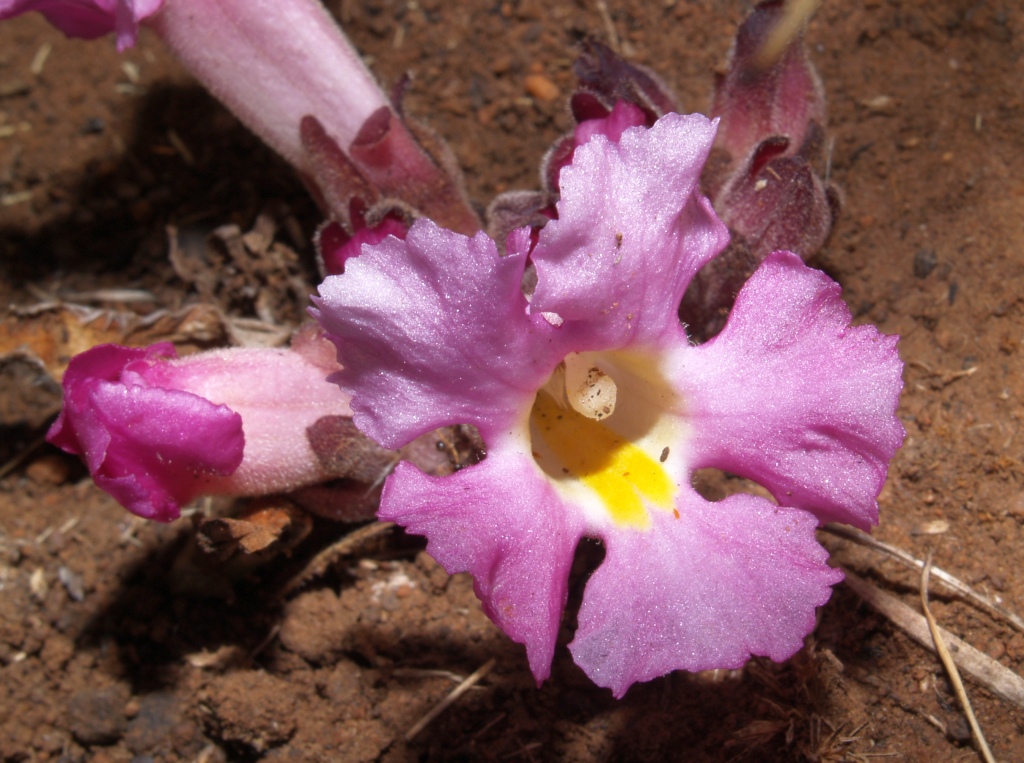
It may seem to be a bit excessive to dedicate an entire web page to a single plant, but if you read on, you will find that the Harveya is a truly amazing plant, worthy of it. We should also be proud of the fact that this otherwise quite rare plant is found in abundance on our estate, provided you know where and when to look for them.
The Ink Plant (Harveya pumila), or in Afrikaans, the Inkblom is unique to our part of the world. It occurs from about our area in the west, to the Witwatersrand in the east, and to the Magaliesberg in the north. Due to urbanization of the Johannesburg area, it has all but disappeared from the Witwatersrand, leaving our dolomitic area in the Cradle of Humankind World Heritage Site, parts of the Magaliesberg and some other areas in the Eastern and Western Cape, Free State, KwaZulu-Natal and Mpumalanga as its only remaining habitat.
The Afrikaans name is probably derived from the fact that when this flower dies, it becomes black, much like the other, more common “Inkblom” (Ink Plant- Cycnium adonense). See picture below.
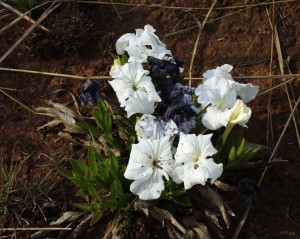
The low-growing H. pumila appears from the rock-hard and bone-dry ground in late winter/early spring, long before most of the other plants begin their summer cycle. They are usually seen after the winter veld fires. It is, however, not quite certain whether the veld fires actually stimulate them into flowering, or whether they are just more visible in the blackened surroundings rather than in tall grass. Nevertheless, they spring from the ground virtually overnight. One thing that is quite mystifying, is that one never sees any leaves on this plant. This is because it is a parasitic plant, getting its nutrients from its host plant, the Anthospermum hispidulum (this plant does not have a common name as far as we could establish). The plant in the top left-hand corner of the photograph below, is the Anthospermum from which this H. pumila plant gets its nutrients. Being a parasite, it does not need leaves. This, however, also leaves it vulnerable. If the host is killed, the Harveya is also killed automatically. Needless to say, there is no way of transplanting this plant into a pot, as without the host, it will simply die.
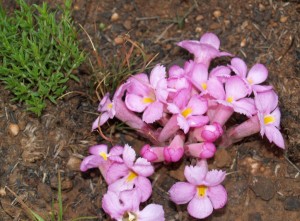
There are several varieties of this plant. In our area, and growing on alkaline dolomite, we find the pink variety, as shown in most of the photographs. We have also recorded a single white plant. The yellow variety, as shown in the next two pictures, was photographed in the Magaliesberg, where it grows on quartzitic soils, which are acidic in nature. This is probably how its common name was derived from, i.e. Yellow Ink Plant. Apparently, the early settlers in the Cape used the dry flowers of this plant as a source of ink, hence the name.
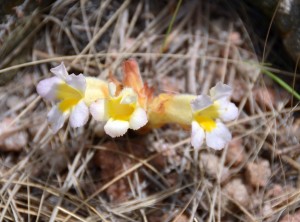
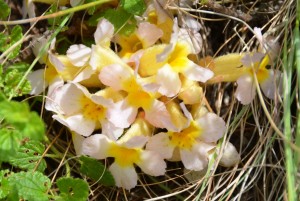
Hereunder are a few photographs of the white variety of H. pumila, found on our Estate and also growing on dolomite. Maybe our assumption relating to the colour variation being related to the acidity/alkalinity of the soil on which it grows is not correct!
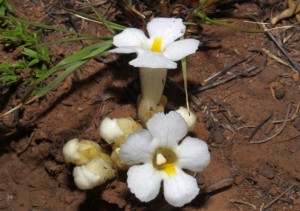
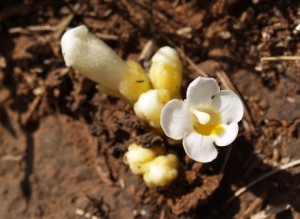
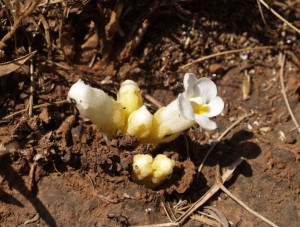
After flowering, the Harveyas produce seeds and then disappear for the rest of the growing season and winter. Nobody really knows what happens to them during that period and how the seeds are dispersed. The two photographs below show the fruit produced by the Harveya. The second one is cut through to reveal the seeds in the fruit. How the seeds find their way to attach a new plant to the roots of its host plant, however, still remains a mystery!
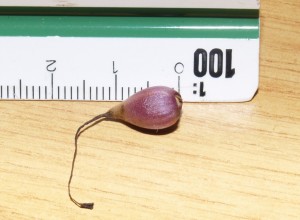
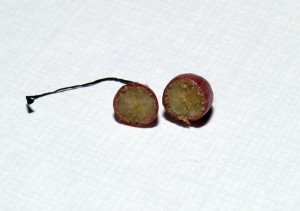
The H. pumila is truly a unique plant. In a world where we “know everything”, it is quite exceptional to find a species having so many unanswered questions. For example, nobody really knows what eats the fuit of the Harveya and how on earth the seeds and new plants becomes attached to the roots of the host plant. We also don’t know whether there is a symbiotic relationship between the host plant and the Harveya. From observations, there is no difference between the hosts with Harveyas and those that do not have the plant attached. There may be a mutual benefit for both plants, but even if there is not, the Harveya does not appear to take much from the host plant , as there is no visible difference between the hosts with or without Harveyas.
We are blessed with having numerous of the host plants growing on our Estate and also to have comparatively many of the Harveya plants making their appearance every spring. We hope you find them as interesting as we have done in photographing them and writing this text. Enjoy the remaining photographs below and just remember, most people will never know about these pants, let alone see them. Thus, for those living in Sterkfontein Country Estates, the Cradle of Humankind area or in one of the other parts of South Africa where this species occurs, make an effort next spring to to find one of these lovely plants!
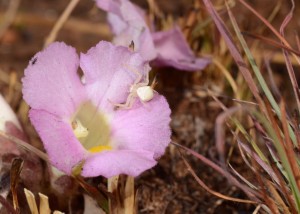
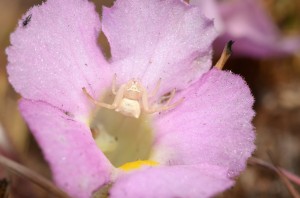
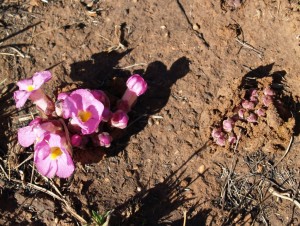
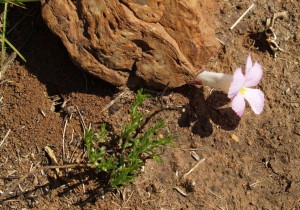
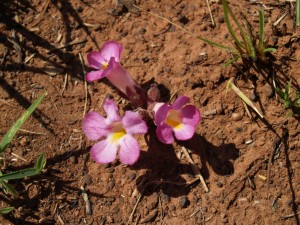
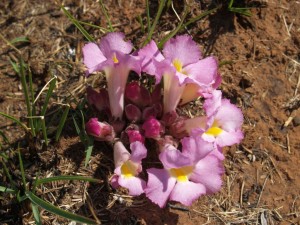
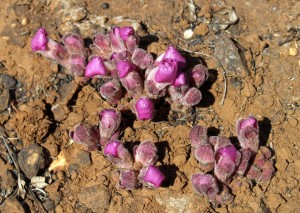
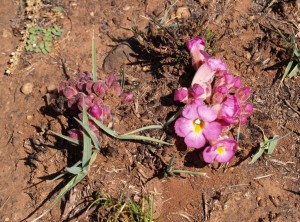
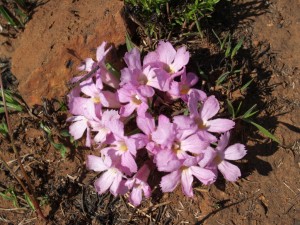
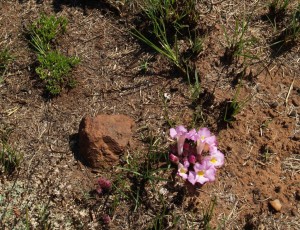
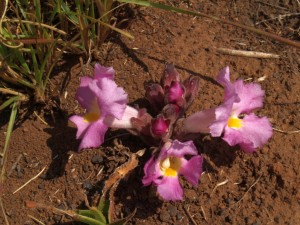
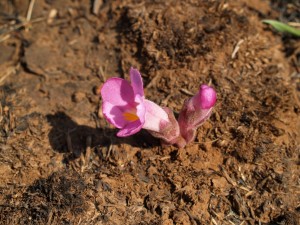
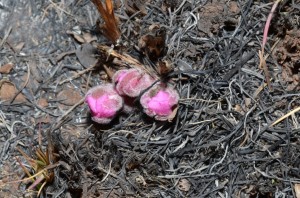
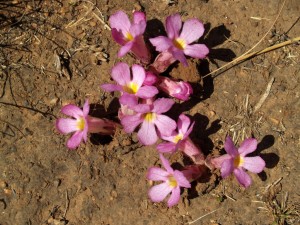
We received an email relating to this web page from Prof. Braam van Wyk of the Botany Department of the University of Pretoria, posing more questions about this amazing plant. The email is copied below:
